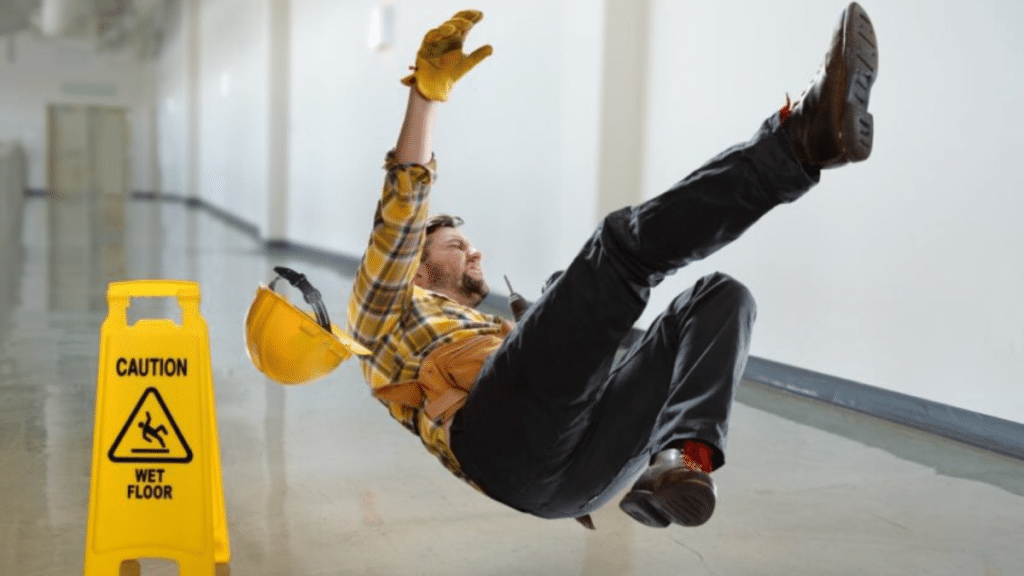In the realm where gravity meets the courtroom, the intricacies of slip and fall cases come to light, unveiling a legal drama where each step is a potential pivot point. This exploration delves into the multifaceted dimensions of slip and fall incidents, dissecting the challenges, statistics, and legal intricacies that unfold when gravity takes the stand.
Advocates in Action: How Attorneys Navigate Slip and Fall Legal Cases
In the legal ballet of slip and fall cases, attorneys emerge as advocates navigating the intricate dance of liability. Based on www.emersonstraw.com, through meticulous investigation and persuasive arguments, these legal professionals play a pivotal role in deciphering the nuances of complex cases. Their active involvement not only translates the intricacies of gravity-induced mishaps into compelling legal narratives but also serves as a beacon for those seeking justice for injuries sustained.
Attorneys become educators, guiding clients through the labyrinthine legal process. They act as interpreters, bridging the gap between the intricate medical details of injuries and the legal framework required to prove negligence. This multifaceted role highlights the interdisciplinary nature of their work, as they navigate not only the complexities of the law but also the human stories that underlie each case.
Gravity in Numbers: Statistics of Slip and Fall in the USA
Before immersing ourselves in the legal intricacies, a quantitative glance sets the stage. In the United States, slip and fall incidents contribute significantly to the tapestry of injuries. According to recent statistics, these incidents account for millions of emergency room visits annually. Moreover, the financial impact is substantial, with billions spent on medical costs and compensation. Statistical insights become a compass, guiding us through the prevalence and impact of these cases, emphasizing the urgency of addressing not just individual incidents but the broader landscape of preventable accidents.
Decoding the Dance: Different Causes of Slip and Fall Incidents
Beyond the statistics lies the tapestry of causation. From slippery surfaces to uneven terrain, the causes of slip and fall incidents are as diverse as the environments in which they occur. Unraveling this intricate dance unveils not only the physical elements but also the human factors contributing to these accidents. Awareness of these causes becomes paramount in constructing a legal framework that addresses liability comprehensively.
Consider the scenario of a grocery store where a spill was not promptly cleaned, leading to a slip and fall incident. The cause, in this case, extends beyond the physical hazard to the responsibility of the property owner or manager to ensure a safe environment. The complexity increases when evaluating incidents in public spaces, workplaces, or private properties, each requiring a nuanced understanding of liability.
The Legal Tightrope: Navigating the Difficulty of Slip and Fall Cases
Legal cases arising from slip and fall incidents are a high-stakes tightrope walk. As explained by Mann Blake & Jackson, establishing liability demands a comprehensive understanding of both the circumstances surrounding the fall and the legal intricacies involved; Proving negligence, causation, and damages requires a meticulous approach that often involves piecing together fragmented evidence and navigating the challenges of conflicting testimonies.
Moreover, the legal tightrope expands as layers of intricacy unfold during the course of a slip and fall trial. Expert witnesses, crucial players in the legal drama, are tasked not only with conveying medical knowledge but also with serving as interpreters. They translate intricate medical procedures and terminologies into a language comprehensible to judges and jurors, highlighting the interdisciplinary nature of slip and fall cases.
The burden of proof, a linchpin in legal proceedings, introduces yet another layer of complexity. Plaintiffs must not only demonstrate a deviation from the standard of care but also establish a direct link between the negligence and the harm suffered. The legal tapestry becomes more intricate as causation is dissected and debated, demanding a meticulous examination of medical records, expert testimonies, and, in some instances, even cutting-edge medical research.
The Human Element: Embracing the Complexity of Slip and Fall Legal Cases
The difficulty in slip and fall cases extends beyond legal nuances; it encompasses the human element. Injuries sustained in these incidents often have profound impacts on the lives of the individuals involved. The emotional toll and physical repercussions add layers of complexity, highlighting the need for a legal system that not only addresses liability but also acknowledges the human stories that underlie each case.
Consider the perspective of a plaintiff who, due to a slip and fall incident, sustains injuries leading to long-term disability. The legal process becomes not just a pursuit of financial compensation but a quest for justice that recognizes the human suffering and life-altering consequences. This human element, woven into the fabric of slip and fall cases, underscores the importance of empathy and understanding within the legal system.
Conclusion: Balancing Justice on the Edge
In conclusion, when gravity takes the stand in slip and fall cases, the legal terrain becomes a challenging yet vital battleground. Attorneys, armed with legal acumen, navigate this landscape, translating the complexities into compelling narratives for justice. As we ponder the statistics, causes, and difficulties inherent in these cases, it is evident that addressing slip and fall incidents requires a holistic approach.
Striking a balance between legal rigor and empathy, the quest for justice on the edge demands not only active legal participation but a collective commitment to fostering safer environments for all. The extension of this commitment encompasses not just legal frameworks but also a broader societal awareness of the causes and consequences of slip and fall incidents. In this holistic pursuit, the legal community, alongside policymakers and the public, can contribute to a landscape where gravity, though a constant force, does not bear the weight of injustice.
